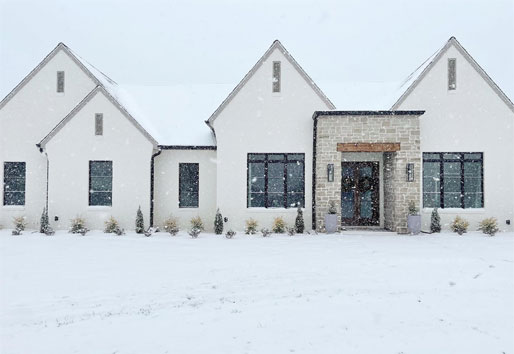TIPS
How to pick energy-efficient windows
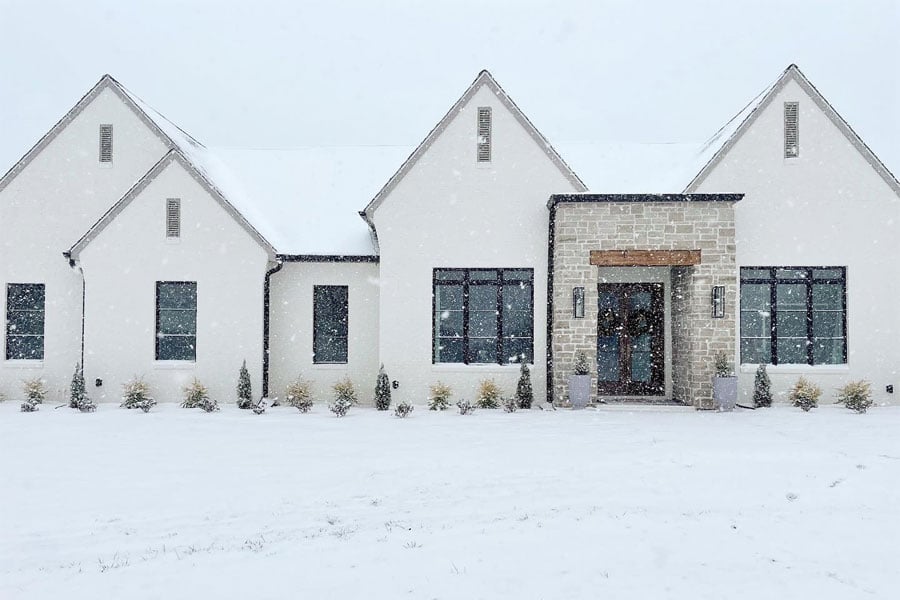
When we talk about energy-efficient windows, we’re mostly talking about glass. Here’s what you need to know to pick out energy-efficient windows ideal for your climate.
Get the Window Selection Guide!
Need help picking out new windows? Sign up for our monthly home design emails, filled with helpful tips and design inspiration, and you’ll get our Window Selection Guide for FREE.
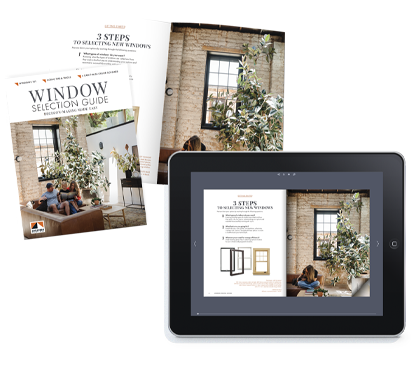
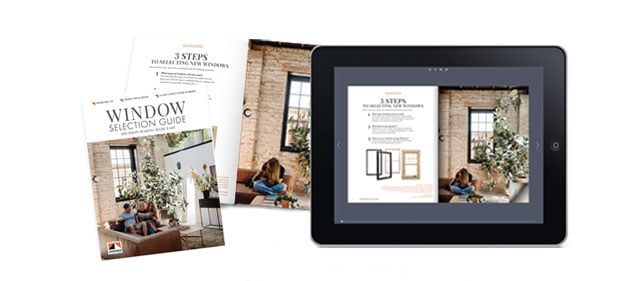
Get the Window Selection Guide!
Fill out the form below to sign up for our inspirational emails and to get your own digital copy of the Window Selection Guide.
Thank you for signing up!
A digital copy is on its way to your inbox. Can’t wait? Start exploring the Window Selection Guide.
More selection tips and inspiring projects await you on our blog.
Types of glass
Windows are made with single, dual- or triple-pane glass — here's the difference between them.
Single-pane glass includes only one sheet of glass between indoors and outdoors. This is the type of window glass you might find in an older home. It can be very beautiful, especially when it’s made with leaded glass, but it’s not energy efficient, which is why single-pane glass windows are often seen paired with storm windows on the exterior for additional insulation.
Dual-pane glass includes two sheets of glass with an air space in between. The air space in an Andersen® window is generally filled with an argon-gas blend that’s denser than air and therefore improves insulation.* This type of window glass is better at insulating than single-pane glass and is a standard option on all our windows, as well as being required by most building codes.
Triple-pane glass goes one step further and includes an additional pane of glass and air space, making it the most energy-efficient glass type. In fact, some A-Series triple-pane windows are recognized as ENERGY STAR® Most Efficient and certified to meet the rigorous level of energy efficiency required by Phius (Passive House Institute US). Triple-pane glass is an option on our A-Series and E-Series windows.

Talk like a pro: Thermal performance
Simply put, this is how well your window keeps heat (or energy) inside the home. If you want to understand this further, a U-Factor value is the measure used to determine how well a window or door prevents heat from escaping. The lower the number, the less heat is being lost. Understanding U-Factor values is helpful if you want to comparison shop between window brands.
ENERGY STAR®
You’ve no doubt seen this label on appliances and other products. It was created by the U.S. Environmental Protection Agency to make it easier for consumers to identify energy-efficient products. When applied to windows, it means the windows have met performance requirements to reduce the transfer of heat in a specific climate zone. ENERGY STAR® windows can lower your energy bills by an average of 12%.**
To understand more about how windows can meet ENERGY STAR certification in your climate zone, check out the next section about glass coatings.
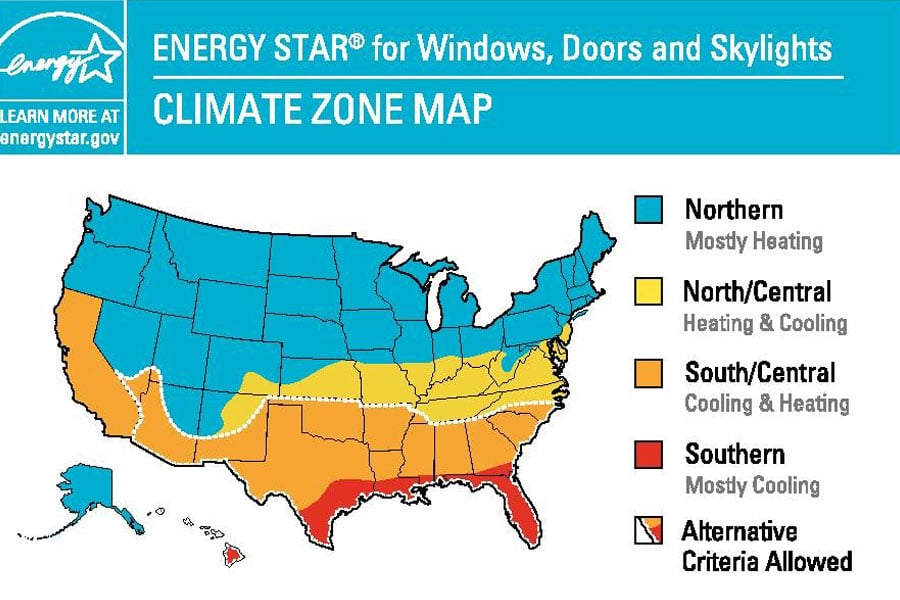
Glass coatings
One of the ways windows can be optimized for a specific climate zone is with a glass coating. Low-emissivity (Low-E) coatings are ultra thin and generally transparent. They can be applied in various ways to reflect heat keeping your home more comfortable. All our windows come standard with a Low-E coating. Read on to find out the best coating for your climate.
Low-E/Low-E4® glass — This is the best option for most people because it helps keep heat in during winter and reflect it away during summer.
SmartSun™ glass — All the benefits of Low-E while also blocking 95% of UV rays. This can be a great choice in both the southern and western U.S.
Sun Glass glass — Ideal for a sunny climate, this coating helps reflect heat from the sun with a darker tint than SmartSun glass.
PassiveSun® glass — Meant for climates where more months of the year are spent with the heat on, this coating allows the sun’s warmth to help heat the home.
HeatLock® technology — For the northernmost climates, this option creates a barrier that helps keep warming rays from the sun inside. It works best in homes with whole-house air exchangers or dehumidifiers.
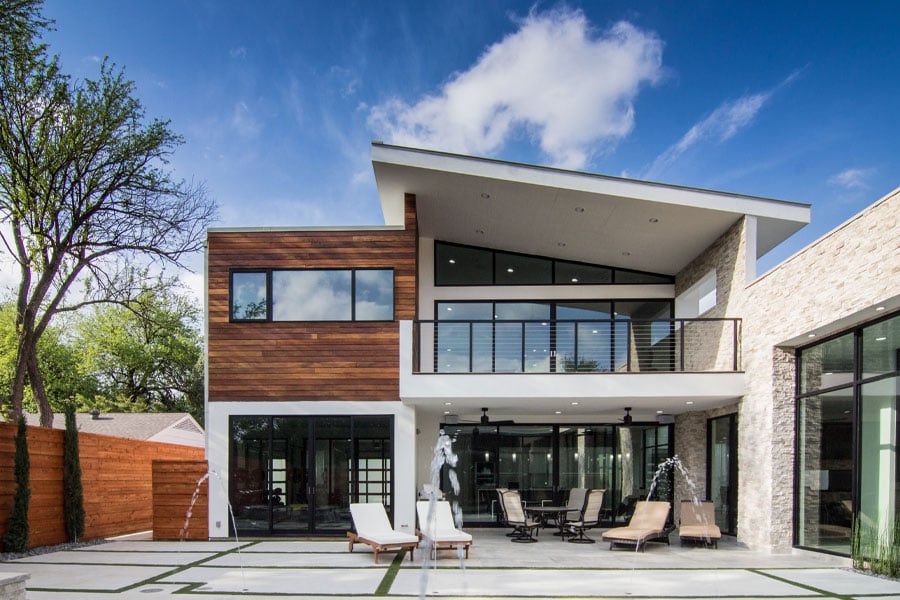
Talk like a pro: Solar heat gain
Simply put, this is how much warmth is gained from the sun. To determine how much radiant heat is entering a home through the windows or doors, a measurement is used called solar heat gain coefficient (SHGC). The lower the number, the less heat the windows are letting in. For example, SHGC of .30 means only 30% of the sun’s energy is passing through the windows into the home. It can be useful to understand a measure like this when window shopping across brands.
Want to know even more? See an overview on how different glass types and coatings compare in terms of performance, as measured by SHGC, U-Factor, visible light transmittance (clarity of glass) and UV protection on our glass options page.
In summary, you can pick out more energy-efficient windows by selecting a more insulating glass type (dual- or triple-pane glass) and a glass coating suited to your climate.
*Our windows can also be ordered air-filled as needed for various reasons, including to meet requirements in high-altitude locations.
** Residential Windows, Doors and Skylights. Date accessed January 4, 2022.
Sign up for emails
Get inspiration delivered!
Beautiful designs, expert tips, and helpful tools for planning your next project — sent monthly to your inbox! Plus, you’ll get FREE access to our Window Selection Guide just for signing up.
